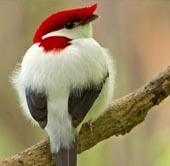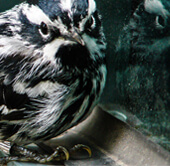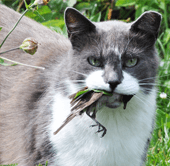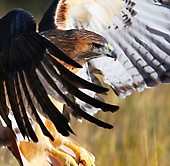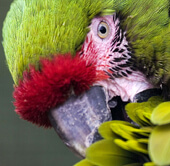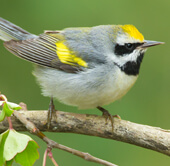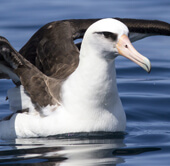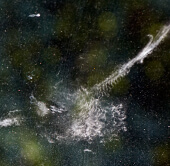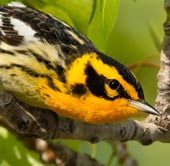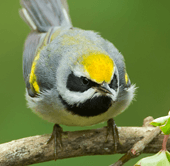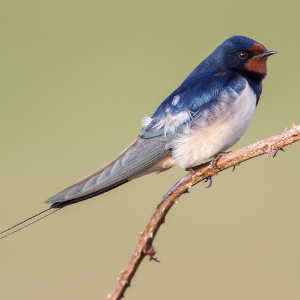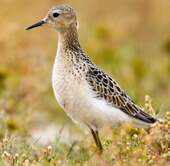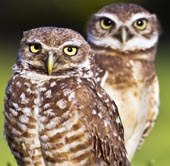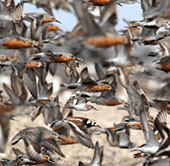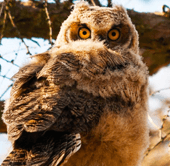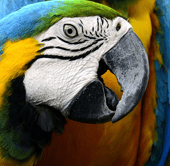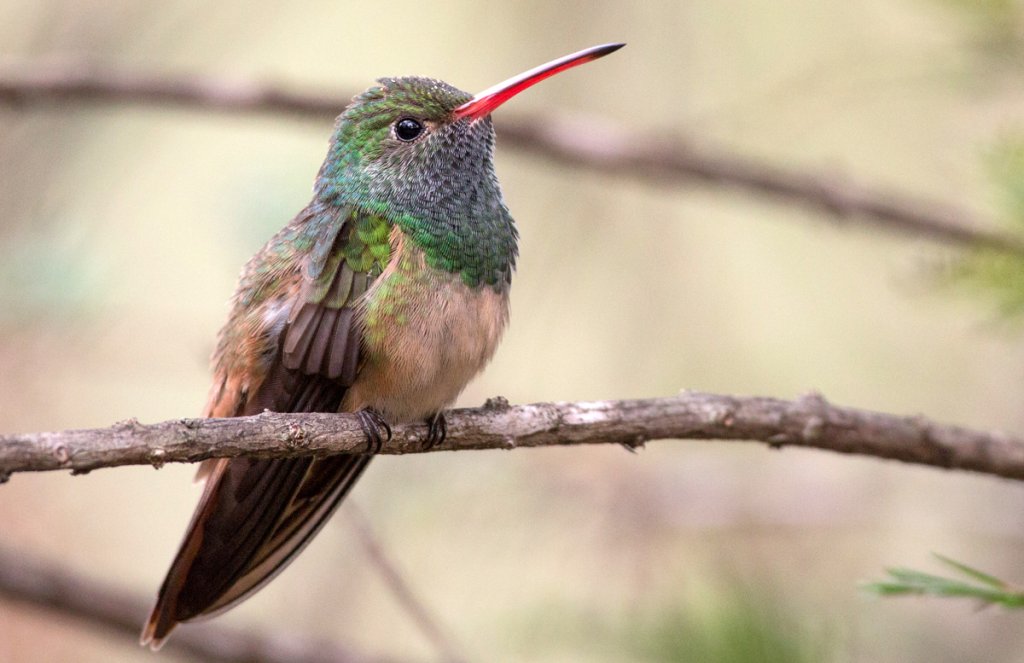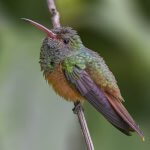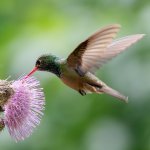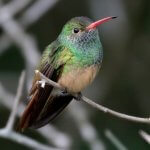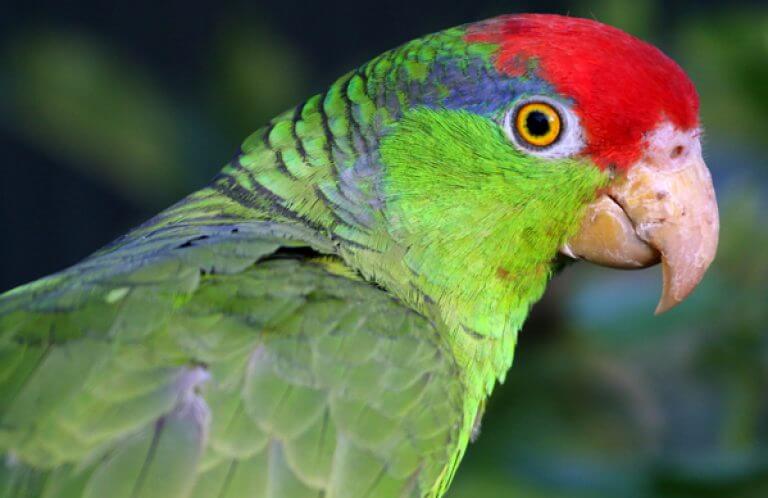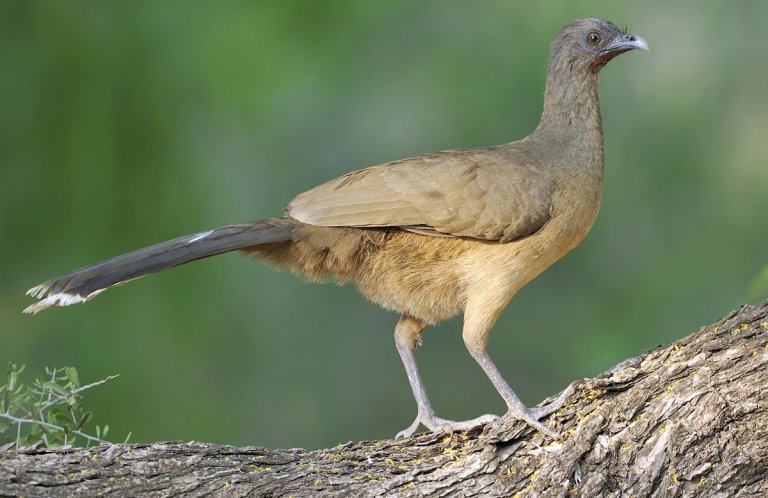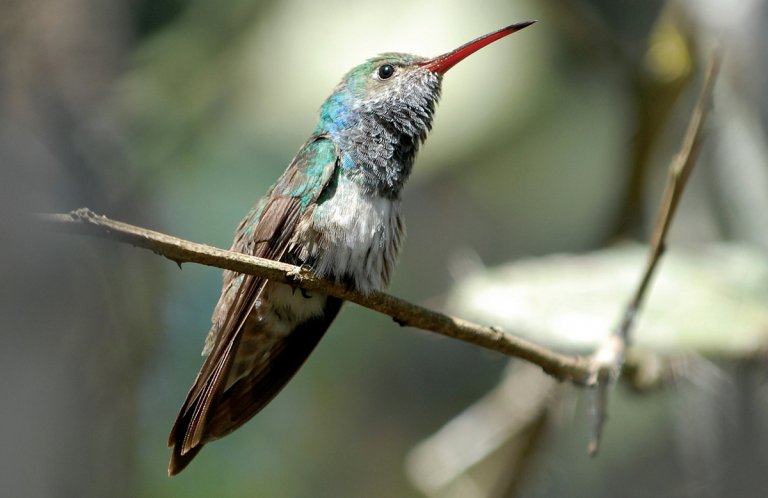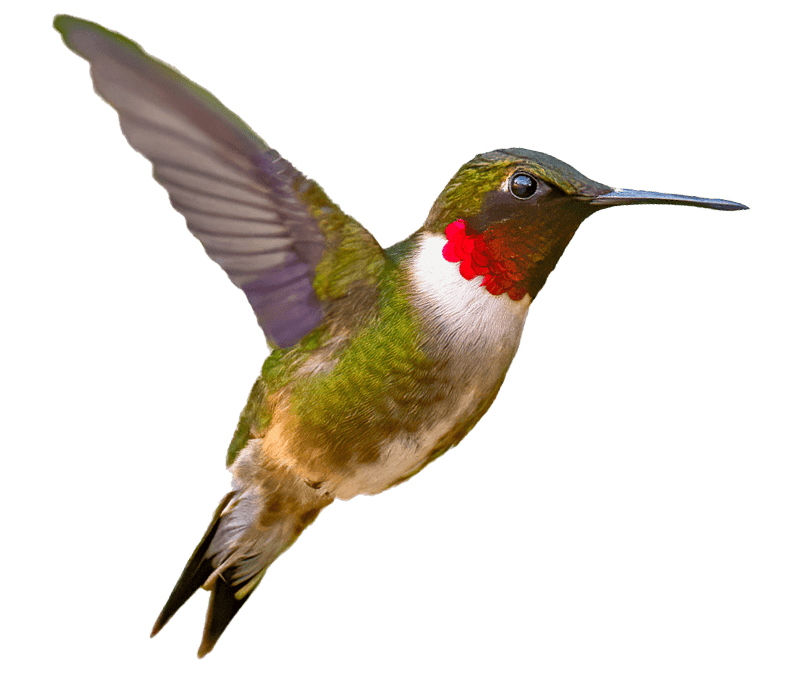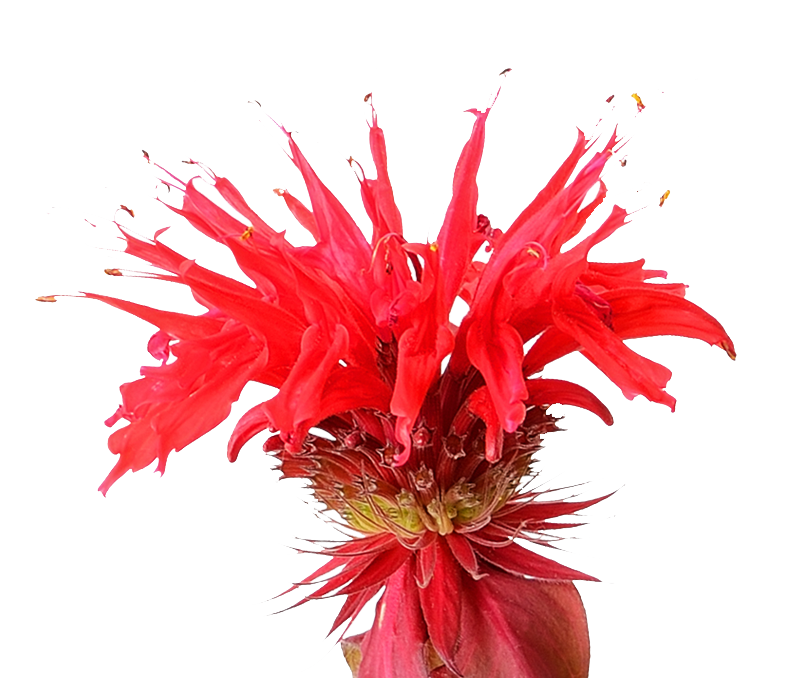About the Buff-bellied Hummingbird
The Buff-bellied Hummingbird is a specialty of the southern U.S. border, and birders that want to add one to their life list need to travel to South Texas or make their way further south, into Mexico, Belize, or Guatemala. This gleaming green hummingbird is larger than a Ruby-throated Hummingbird, and can be identified by its black-tipped red bill, rusty-orange tail, and eponymous buff-colored belly and undertail. It is closely related to the Vulnerable Honduran Emerald, a species endemic to that country. The Buff-bellied Hummingbird is sometimes called the Fawn-breasted Hummingbird or the Yucatan Hummingbird.
Northward Bound?
Although most Buff-bellied Hummingbirds are resident (non-migratory), some migrate short distances south from Texas into Mexico. Interestingly, others migrate northwards, to winter along the central Gulf Coast well into Louisiana, and more uncommonly, as far east as Florida. These northward migrations are unique among North American hummingbirds and are the subject of ongoing research.
Songs and Sounds
The Buff-bellied Hummingbird gives a variety of distinctive call notes, including a two-syllable call (tsi-we) heard by displaying birds. Another familiar call is a chatter that sounds a bit like electric static.
Two-syllable calls:
Call:
Breeding and Feeding
Like all its kin, ranging from the Rufous Hummingbird to the Fiery Topaz, the male Buff-bellied Hummingbird is polygynous (one male mates with many females), and is uninvolved in nest-building or raising young.
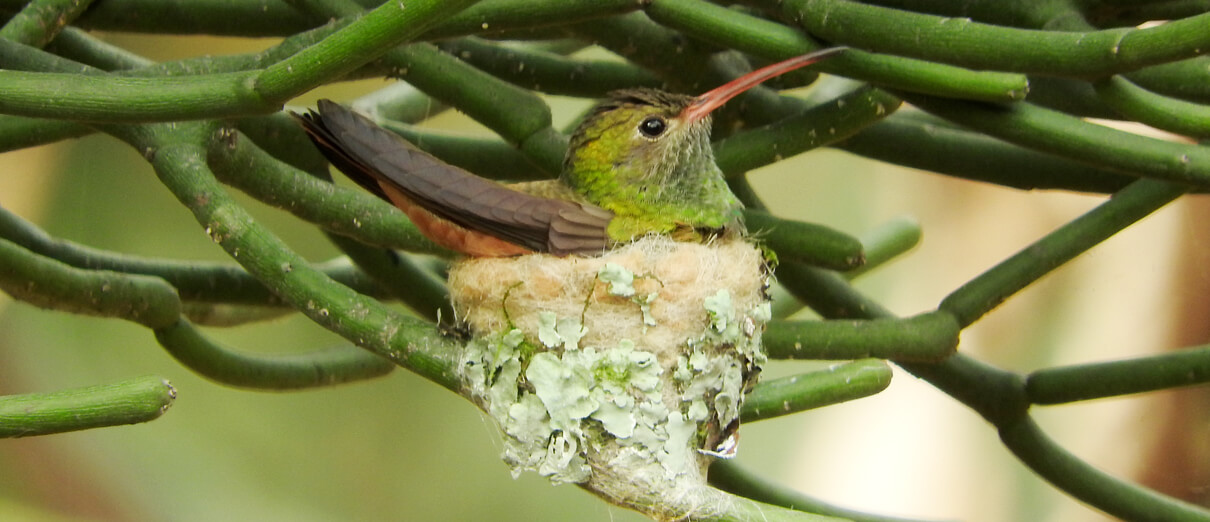
Once mated, a female Buff-bellied Hummingbird builds her nest in a small tree or bush, usually between 3-10 feet high. The cup-shaped nest is made from bark shreds, grass, and other fibers, bound by sticky spider web and camouflaged on the outside with shreds of lichens and bark. She lays a clutch of two tiny eggs, then broods and raises the young herself.
The Buff-bellied Hummingbird feeds primarily on nectar from a wide variety of flowering plants, aggressively defending particularly productive feeding areas from rivals. It also feeds on tiny insects, and readily visits hummingbird feeders.
Region and Range
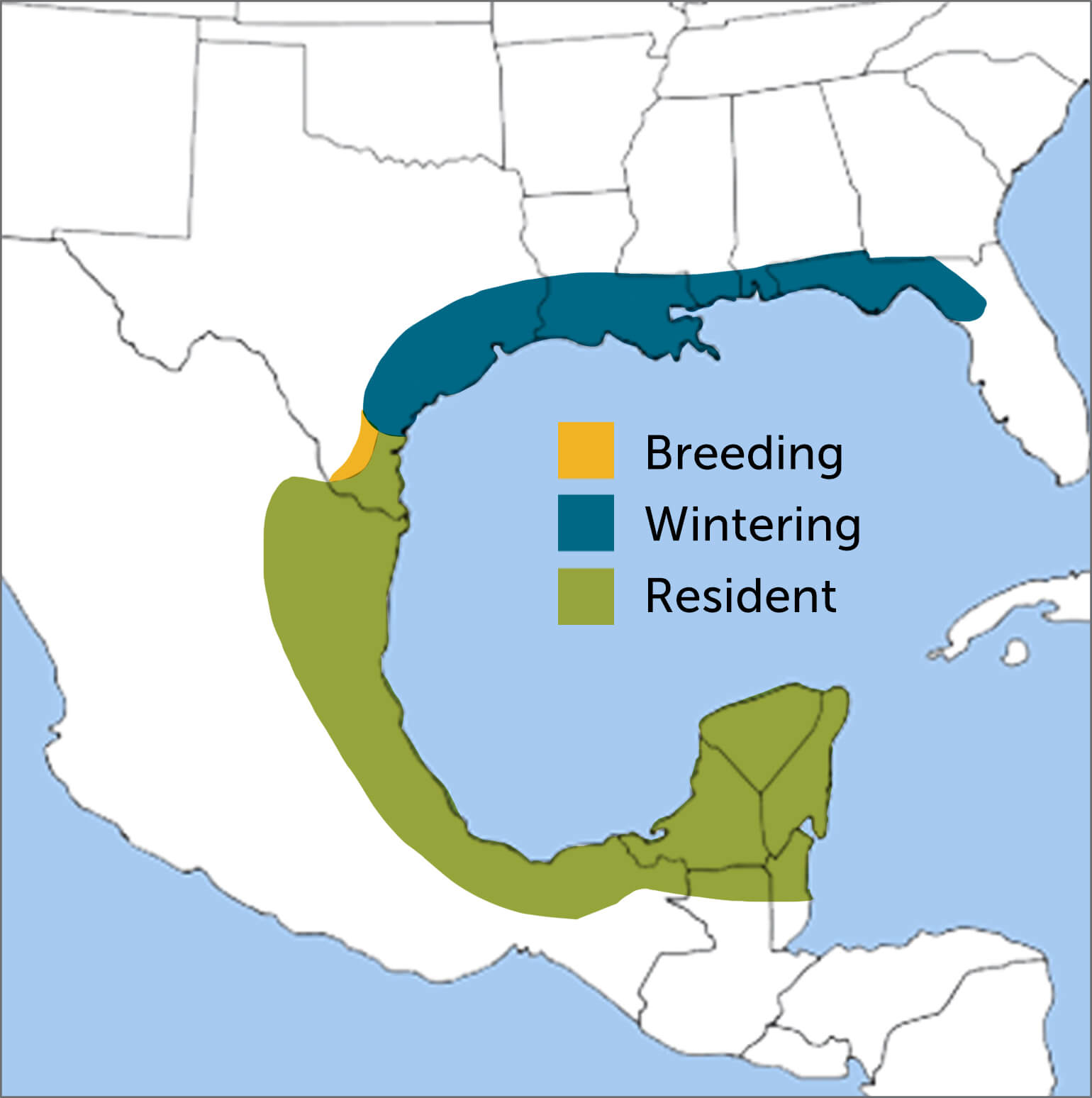
The Buff-bellied Hummingbird occurs along the Gulf Coast of the United States and Mexico into Belize and Guatemala. In the U.S., it breeds in Texas, where it appears to be expanding its range. It has been reported in Louisiana, Alabama and Florida during the fall and winter.
Scientists recognize three subspecies of Buff-bellied Hummingbird — one found in the U.S., and the other two resident in Mexico and further south. The southernmost subspecies is a rich rufous, rather than buff, on the belly.
Conservation

Help support ABC's conservation mission!
As with most bird species, the Buff-bellied Hummingbird is threatened by habitat loss — in the case of this species, the clearing of brushlands in Texas and Mexico for agriculture and livestock grazing. It appears to adapt to human-altered landscapes, and regularly visits hummingbird feeders and gardens with flowering plants.
ABC staff in the Rio Grande Joint Venture (RGJV) are working with state, federal, and nongovernmental organizations in both the U.S. and Mexico to help preserve Tamaulipan Brushlands habitat used by the Buff-bellied Hummingbird as well as other distinctive species of this habitat, including the Plain Chachalaca, Green Jay, and Red-crowned Parrot.
Get Involved
Policies enacted by the U.S. Congress and federal agencies, such as the U.S. Fish and Wildlife Service, have a huge impact on migratory birds. You can help shape these rules for the better by telling lawmakers to prioritize birds, bird habitat, and bird-friendly measures. To get started, visit ABC's Action Center.
Living a bird-friendly life can have an immediate impact on migratory birds in the United States. Doing so can be as easy as adding native plants to your garden, avoiding pesticides, and keeping cats indoors. To learn more, visit our Bird-Friendly Life page.
American Bird Conservancy and our Migratory Bird Joint Venture partners have improved conservation management on more than 8.5 million acres of U.S. bird habitat — an area larger than the state of Maryland — over the last ten years. That's not all: With the help of international partners, we've established a network of more than 100 areas of priority bird habitat across the Americas, helping to ensure that birds' needs are met during all stages of their lifecycles. These are monumental undertakings, requiring the support of many, and you can help by making a gift today.

